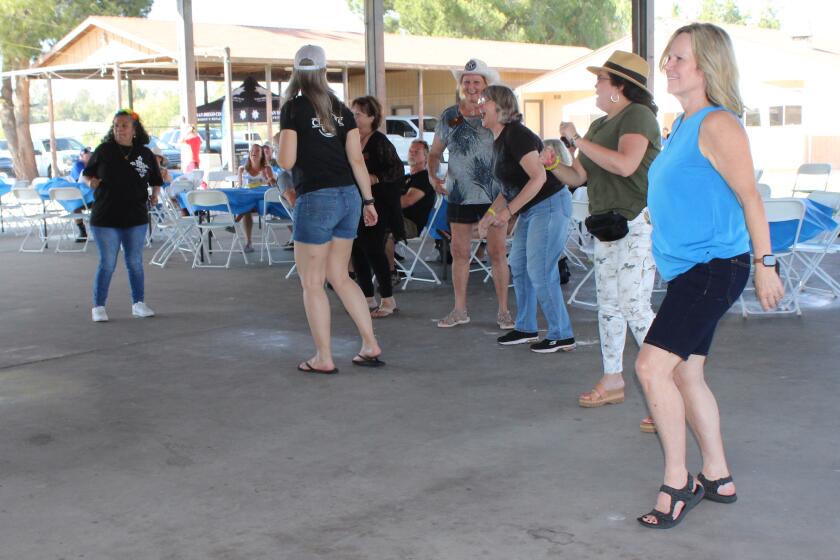Report blames lapses in planning, data-sharing for 2011 blackout
By Ken Fields
,
City News Service
Last September’s historic Southland blackout, which left Ramona and communities from northern Mexico to Orange County and Arizona without electricity for almost 12 hours, stemmed from inadequate preparedness and subpar coordination among the agencies that operate the region’s power systems, according to a government-industry report released Tuesday.
The analysis by the Federal Energy Regulatory Commission and the nonprofit North American Electric Reliability Corporation concluded that “effective review and use of information would have helped operators avoid the cascading blackout.”
The outage left 2.7 million utility customers across the Southwest without electricity, forcing the closure of schools, offices, government facilities, stores and gas stations throughout the region.
Motorists were stuck on commuter roadways and ran out of fuel in lengthy traffic jams, medically fragile people packed hospitals, and others wound up trapped in elevators and on trolley cars.
The outage began about 3:40 p.m. on Sept. 8, when Arizona Public Service’s Hassayampa-North Gila 500-kilovolt transmission line went down.
The region’s power providers and system overseers proved unable to “ensure reliable operation or prevent cascading outages” following that single contingency in the grid, according to the report.
“That line loss itself did not cause the (regional) blackout, but it did initiate a sequence of events that led to the blackout, exposing grid operators’ lack of adequate real-time situational awareness of conditions throughout the western interconnection,” the document states.
In San Diego Gas Electric’s service area, the falling dominoes-style breakdown of transmission systems knocked all the power out almost simultaneously.
“San Diego was essentially gone in 30 seconds,” SDGE President Mike Niggli said during a briefing he called May 1 to discuss the findings of the report.
In response to reporters’ questions, Niggli insisted that the local utility’s equipment “worked just as designed’’ when it went off line to keep the blackout from moving north, into other parts of California.
“So the system’s designed to partition itself ... . Our system worked perfectly to partition (the grid) and make sure (the outage) did not spread,” Niggli said.
The problem for San Diego County and adjacent areas was that “systems to the east actually sort of collapsed and pulled us with them,” he said.
Niggli agreed with the report’s conclusion that the operators of the various involved systems lacked what he called visibility into each other’s moment-to-moment operations and equipment status.
According to the document, “more effective review and use of information would have helped operators avoid” the large-scale crisis.
“For example, had operators reviewed and heeded their real-time contingency analysis results prior to the loss of the APS line, they could have taken corrective actions, such as dispatching additional generation or shedding load, to prevent a cascading outage,” the report states.
The eight-month analysis highlights the growing need for more coordination of grid operations in the West, according to FERC Chairman Jon Wellinghoff.
“Implementing the recommendations in this report will assist in enhancing the planning and system-awareness measures that are necessary to operate an efficiently integrated bulk-power system and reduce costs to consumers from these types of outages, (which) could continue if operational efficiencies are not improved,” Wellinghoff said.
Along with recommending that bulk power system operators improve situational awareness through better communication, data-sharing and the use of real-time tools, the report advises that:
• System planners and operators recognize, study and incorporate the effects of sub-100-kilovolt systems on bulk-power system reliability;
• Transmission owners and operators review overload-protection relay settings to give them more time to mitigate overloads;
• Transmission operators and the Western Electricity Coordinating Council study the effects of special protection systems and safety nets, such as one that disconnected San Diego from high-voltage lines south of San Onofre Nuclear Generating Station, to understand how they affect reliability and to ensure that they do not have unintended or undesirable effects; and
• System operators improve their ability to re-energize transmission lines following outages.
The regional outage demonstrated how complex and interdependent the North American electric systems are and the importance of information sharing, communications, system studies, and coordinated operations among all interconnected systems, according to Gerry Cauley, president of the North American Electric Reliability Corporation.
“Transmission operators, balancing authorities and reliability coordinators must work together to effectively manage this complex system,” he said.
The head of SDGE echoed that opinion, saying the goal would be aided locally by the expected completion this June of the Sunrise Powerlink, a 117-mile, 500-kilovolt transmission line that will carry renewable energy from the Imperial Valley to San Diego.
“Everybody’s going to dig deep to improve reliability,” Niggli said.




